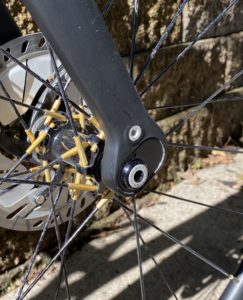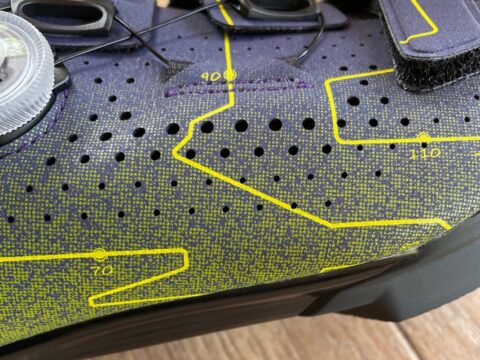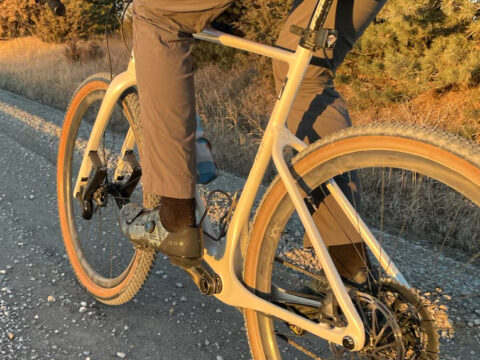
Robert Axle Project Lightning Thru Axles: Quick Review – by MG
Without a doubt, one of the greatest recent advances in bicycles has been the adoption of thru axles. Compared to the quick release mechanisms they replaced, thru axles provide a stronger, more secure interface between the wheel and the frame or fork.
While stock thru axles will suffice for many cyclists, the demand for aftermarket thru axles has grown steadily in recent years. Robert Axle Project has been at the forefront of this trend, and it offers a wide range of thru axle solutions in sizes to fit nearly any bicycle. The company’s comprehensive online thru axle finder makes it easy to see all of the options available for your bike.

A few months ago, Robert Axle Project sent me a set of its Lightning bolt-on axles for Riding Gravel’s 2020 GT Grade Carbon Pro test bike. The bolt-on design uses a 6mm hex wrench to install and remove the wheels, as opposed to an integrated lever or cam. The tradeoff is a cleaner, less bulky appearance, and of course lighter weight.
Robert Axle Project also offers a number of other innovative thru axle solutions, including locking axles and custom axles for attaching a cargo rack or BOB trailer. It also offers the Drive Thru – a dummy axle with a chain keeper to facilitate drivetrain cleaning and lubrication.
All Robert Axle Project axles are manufactured at the company’s Bend, Oregon headquarters. The company claims the axles are machined to the highest standards in the industry. And while that’s a claim I’m not able to independently verify, they have a very high quality feel. Plus, the look is a distinct step up from the stock GT axles.
Riding the Lightning

At 29g for the front axle and 40g for the rear, the Lightning thru axles saved a total of 13g compared to the stock bolt-on axles. Those switching from lever-equipped axles will save quite a bit more weight.
From my perspective, the weight savings is secondary to the quality of the Lightning axles. They thread in and out noticeably more smoothly than the stock axles and holt tight in use. Though I couldn’t feel it on the road, I also suspect the constant 12mm outer diameter of the Lightning front axle is stronger and stiffer than the stock axle, which tapers to a smaller diameter in the middle (presumably to save weight).
I also like the fact that the Lightning axles use a 6mm hex wrench for installation, compared to the 5mm hex on the stock axles. The larger hex interface is a better match for the 12 Nm torque spec, in my opinion.
Robert Axle Project offers a lifetime warranty on its products, and a 60-day return policy. Pricing varies by application, but the Lightning axles for my GT Grade retail for $42 for the front axle and $48 for the rear. Considering the quality, aesthetics and lighter weight of the Lightning axles, the pricing seems very fair.
Learn more about Robert Axle Project and its complete line of thru axles for bicycles of all types at RobertAxleProject.com.
Note: The Robert Axle Project sent the Lightning axles to RidingGravel.com for test and review at no charge. I was not bribed nor paid for this review and I will always strive to give my honest thoughts and opinions throughout.











